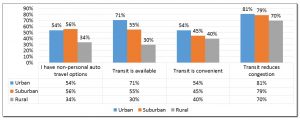In a recent blog post, my colleague and Transportation Policy Research Center Director Ginger Goodin, took a look at some of the lifestyle changes being adopted by urban Texans in their quest to mitigate the impacts of congestion on their daily travels. While about 85 percent of Texans now live in an urban environment, nearly 4-million Texans call the country home.(1) The 2016 Texas Transportation Poll suggests that rural Texans exhibit travel behavior that is distinct from their urban and suburban counterparts. Furthermore, attitudes and opinions regarding (1) who should influence transportation policy and (2) strategies for managing transportation issues can be strongly influenced by home location.
Travel Behavior
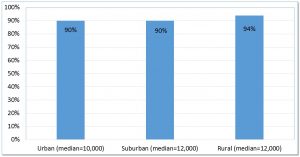
Figure 1 (click to enlarge) presents the proportion of all urban, suburban and rural Texans who either own or lease a personal vehicle. The data suggests that while vehicle ownership is high across the landscape spectrum, rural Texans are more likely (albeit slightly) to own or lease, relative to either urban or suburban Texans. Additionally, the median number of miles driven annually by rural Texans is greater than that of urban Texans, and on par with that of suburban Texans.
Rural Texans are the least likely to have made a trip using something other than a person auto, as illustrated in Figure 2.
Travel Solutions
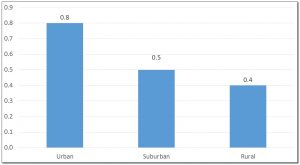
Figure 3 may help explain the low use of non-personal auto modes (particularly transit) by rural Texans. Only a third of rural Texans agree that they have a non-personal auto travel option, and less than a third agree that transit is available. This is a stark difference from either suburban or urban Texans who feel the same way. Similarly, in contrast to suburban or urban Texans, fewer rural Texans believe that transit is convenient or agree that transit reduces congestion.
Rural Texans’ low reliance on alternative modes appears to be correlated with their perceptions of who should influence transportation policy (Figure 4). They are more likely to own and drive personal vehicles and as such are more likely to think auto drivers should have the most influence over transportation policy (Figure 5). Where they differ from the urban and suburban counterparts is in how little influence they think other groups such as bicyclists or environmentalists should have.
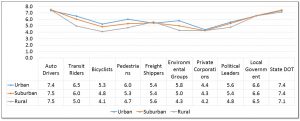
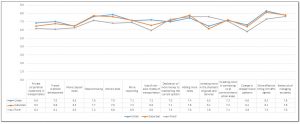
Likewise rural Texans are not as supportive as their counterparts with strategies that encourage use of non-auto modes or transit oriented development.
What Does the Poll Tell Us about How Rural Travel and Opinions Differ?
While rural Texans are more likely than urban Texans to drive more and own or lease a car, the differences are not that substantial. However, the use of alternative modes seems to be the “great differentiator” when reviewing travel behavior through the landscape lens. Rural Texans use alternative modes 50 percent less than urban Texans and 20 percent less than suburban Texans. Lack of availability and lack of convenience, perhaps more than any other factors, account for these differences. This low reliance on alternative modes translates directly into lower levels of rural support for alternative mode groups regarding their influence on transportation policy. It also translates into lower levels of rural support for transportation management strategies that focus on alternative modes.
Now that we’ve taken a look travel behavior and travel solutions, my next blog post will focus on how landscape can affect opinions regarding transportation funding and customer satisfaction.
1. United States Census Bureau. URBAN AND RURAL Universe : Housing units 2010 Census Summary File 1. 2011–2011. https://factfinder.census.gov/faces/nav/jsf/pages/index.xhtml. Accessed Dec. 2, 2016.
Chris Simek is a TTI assistant research scientist.
